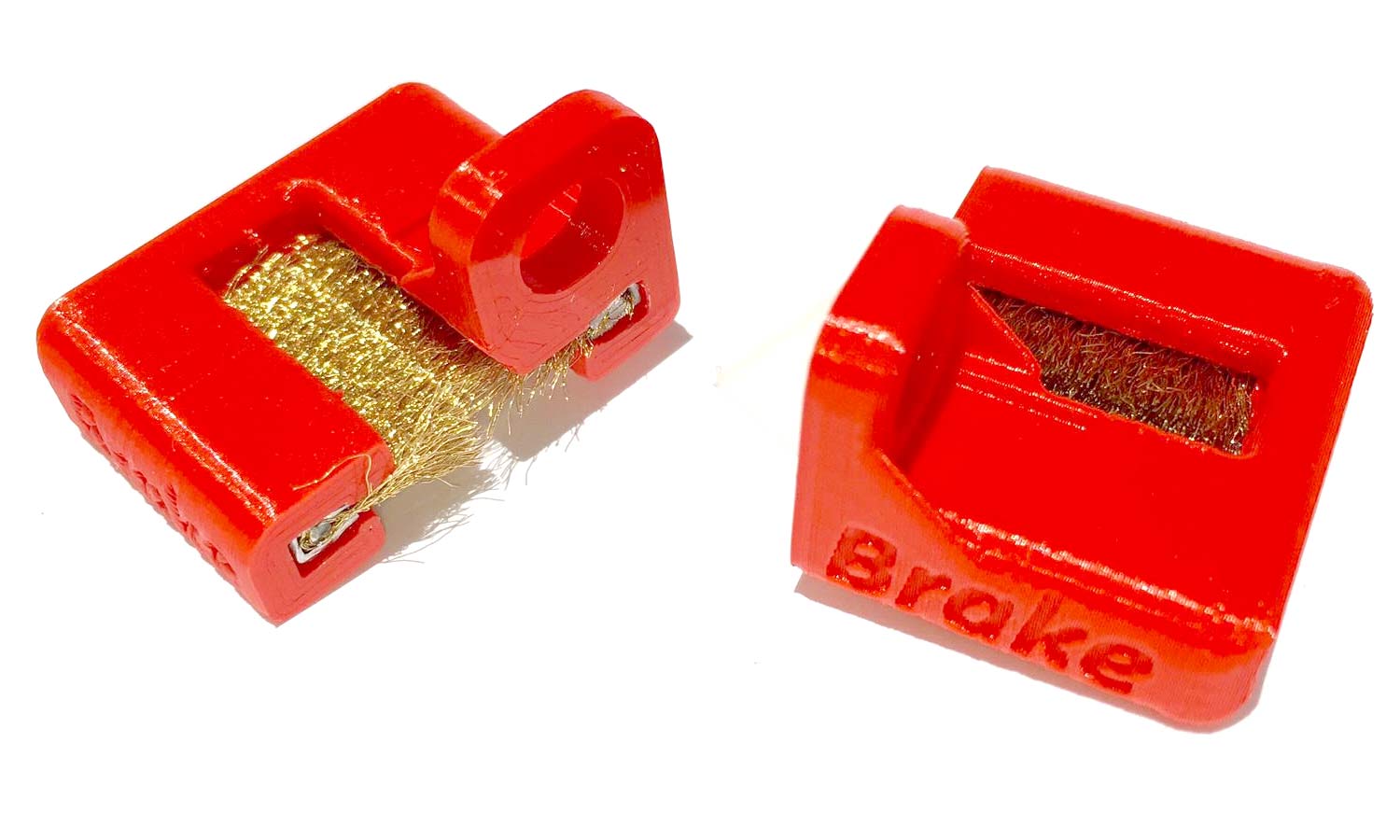If you’ve ever had one of those long rides in the rain or on some sandy trail where it sounded like your brakes were rubbing the entire time, only to stop and find your pads worn away, Brake Protec may have the perfect widget for you. Essentially a tiny 3D printed carrier holding brush bristles, it mounts to your disc brake caliper and wipes rotors clean before they spin back into the brake pads.
Brake Protec disc brake rotor cleaning brush system
Leave it up to the Dutch, the same people who brought you marathon beach races. We all know how sand can wreak havoc on your bike, but especially the fin grit can stick to disc brake rotors, spin around into your brake pads, plus both prematurely wear pads & rotors and increase resistance.
Brake Protec disc brake rotor cleaning brushes – Tech Details
The Brake Protec is beautifully simple – a 3D printed nylon carrier holds two sets of soft, fine brass bristles that constantly brush mud, sand & other contaminants off your rotors before they come back in contact with the brake pads. Sure, the bristles themselves must add a tiny amount of drag to the system (apparently just for the first 50-150km until they match your rotors’ width), but it is much less than the constant grinding of wet sand & grit, and quieter too! Also since your pads won’t wear down faster in poor conditions, brake power and pad bite will last longer and be more consistent.
The Brake Protec brushes are simply installed by removing the rearward caliper bolt on IS mount disc brakes, and retightening with the brush in place. If you are careful, the brush will even self-align when you slide it over the top of the rotor. Brake Protec says their brushes last for +/- 10,000km (6200mi) and result in lower operating costs due to longer brake pad life.
Brake Protec brushes sell for 22€ for a single Solo brake setup or 36€ for a Duo pair for both front & rear brakes, and come in a number of colors. (Today only, if you buy a complete set you can get a free set of replacement brushes to double their longevity.) The are compatible with most Post mount (or IS with adapter) disc brake setups, but not flat mount. Brake Protec ships their rotor brushes worldwide, consumer direct, and offers a 30 day money-back guarantee.


